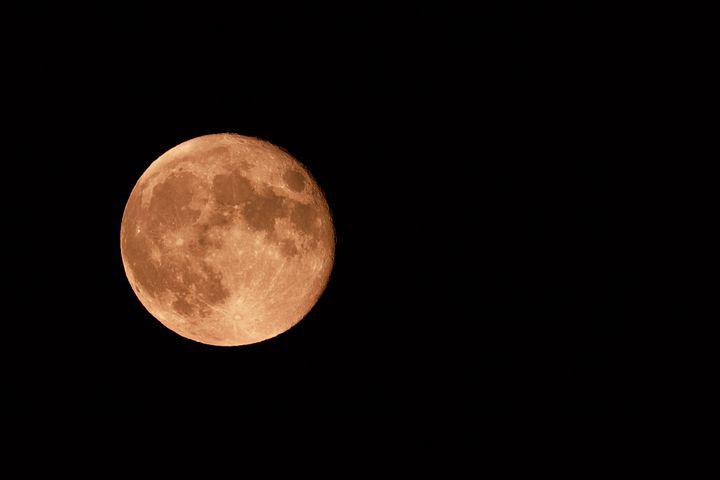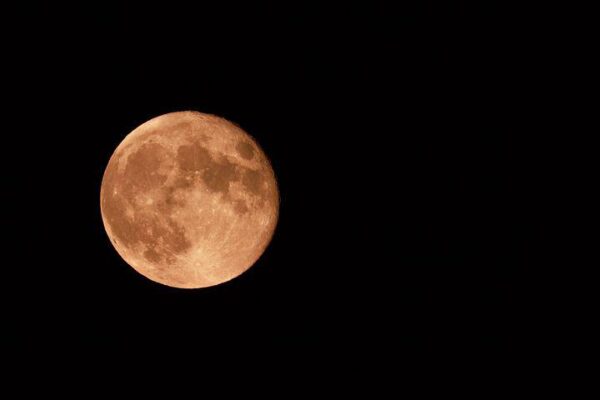June’s full moon is a strawberry supermoon. Here’s how to watch. June’s full moon is a berry special. It’s called the strawberry moon and it’s best viewed with friends and family. Tonight, it’ll be at its brightest at 3:12 a.m., but it will be full for three days around that time. You can watch the supermoon on Wednesday night or wait until early Friday morning either way, you won’t want to miss this once-in-a-lifetime event!
June’s full moon is a strawberry moon.
The moon will appear full for three days from June 5-7, 2019. It is not red, as the name might suggest; it’s just a name given by Native American tribes who used to celebrate when the berries were ripe for picking.
The moon will be at its closest point to Earth on Monday night (June 3) at 10:23 p.m. ET (5:23 a.m ET Tuesday). The next time you’ll see it this close is in 2049!
When is the full moon?
The full moon will take place on June 21, at 7:31 a.m. EDT, just 15 minutes after the sun rises in New York and five minutes before it does in London. This is a strawberry supermoon because it’s the closest to Earth since January 1948 and won’t get any closer until 2034, according to NASA.
Scientists have been trying to figure out why there are such strange names for these astronomical events over time (and they still are). Here’s what we do know:
- A full moon happens when the moon is directly opposite the sun during its orbit around Earth, which causes it to appear bright and large in our sky as seen from here on Earth. The term originally referred to how much brighter than usual this celestial body will be during this time of month or year; now we use that term specifically for when there’s no other type of light source nearby like an eclipse or solar flare that might make it seem even brighter than usual by comparison.
It is named for the wild strawberries that ripen in June.
The name June’s full moon is a strawberry supermoon. The June full moon gets its name from the wild strawberries that ripen in June. The Native American tradition of giving names to each month’s full moon began around 8,000 years ago, with tribes like the Ojibwe and the Cherokee naming each one after its seasonal fruits or plants. The strawberry has been associated with this month since at least 1613 CE when English colonists first arrived on North American shores, but it wasn’t until 1787 that botanist Frederick Pursh was credited for coining the term “strawberry moon.”
The moon will reach peak illumination on June 5 at 3:12 a.m. ET
On June 5, the moon will reach its full phase in the middle of the night. As it turns out, that’s also when the moon is most visible during this month’s supermoon and it will be at its brightest too.
The peak illumination of June’s full moon occurs on June 5 at 3:12 a.m. Eastern time (that’s 12:12 UTC), when our satellite will appear about 14 percent brighter than usual due to its closeness to Earth as well as its angle on our planet relative to the sun. The next opportunity for a similarly bright full moon won’t come until July 13-14, when we’ll have another Strawberry Moon and see a similar peak illumination around midnight Eastern time (or 9 p.m UTC).
The moon will be full for three days around the peak.
The moon will be full for three days around the peak. The peak illumination on June 5 at 3:12 a.m. ET, which is when it’s at its brightest, and happens when the moon is at perigee or the point in its orbit that brings it closest to Earth.
The next supermoon will be the Buck Moon in July.
In July, the full moon will be known as the Buck Moon and will take place on July 2. It’s also the first full moon after the summer solstice, making it a supermoon as well. The autumnal equinox will occur on September 23 this year, which means that this month’s “full” moon is technically considered a “harvest” moon since it occurs so close to the equinox but don’t worry about getting confused! We’ll have plenty of time to explain all of these terms in more detail later in this article.
The next time we see another Buck Moon is 2024; from now until then we’ll have to make do with only one per year!
Make sure to watch this supermoon tonight.
Tonight, the moon will be at its brightest and most visible. It will appear larger than usual from Earth, appearing 30 percent brighter than a regular full moon.
The only time you can see this “supermoon” is when the moon’s orbit takes it to perigee (the point in its orbit when it’s closest to Earth). In other words, when it’s at its closest point to us on Earth. And since we’ve had two full moons since the last time this happened April 1st was also a strawberry supermoon June 21st’s version should be even more spectacular with plenty of light reflecting off our planet’s atmosphere.
How to watch on Wednesday night
To watch the supermoon on Wednesday night, you can tune in to NASA’s livestream of the event. The livestream starts at 8:30 p.m. EST (or 11:30 p.m. UTC) and lasts for 2 hours, until 10:30 p.m., so you’ll want to set aside some time for it if possible.
If you’re not able to watch live, fear not you can still experience the full moon’s superpowers by catching up on its lunar performance once it’s been recorded and uploaded online! You might also want to check out your local news station for a replay of their coverage of this historic moment in history; or if all else fails there are plenty of ways online where you can find out what happened during any given thing that took place at some point or another somewhere around here (we recommend Wikipedia).
Conclusion
If you have an opportunity to watch the supermoon tonight, it will be worth your time. Not only is it a rare occurrence, but it’s also beautiful!


